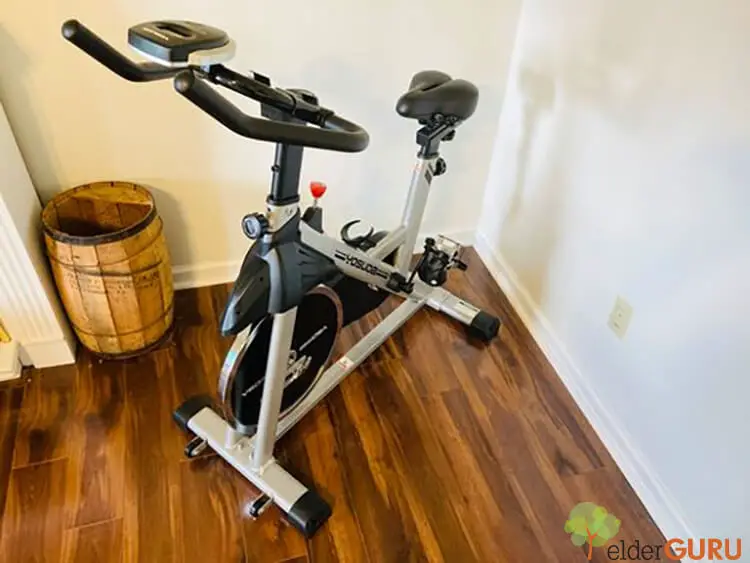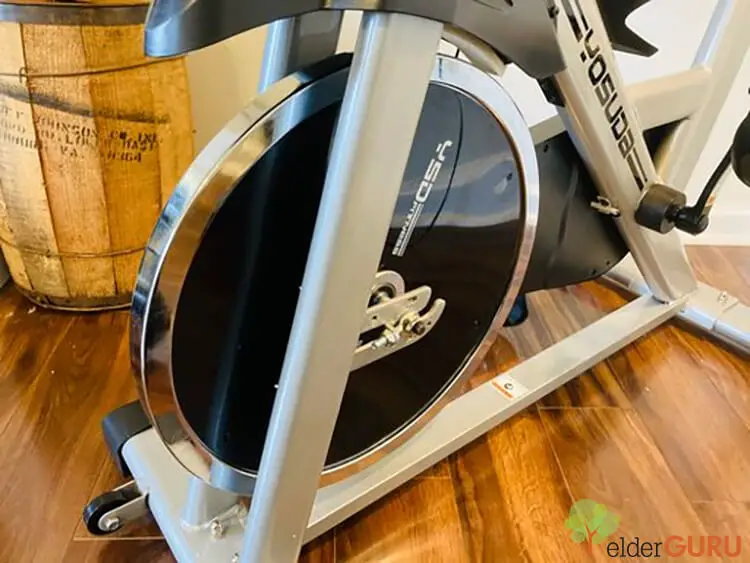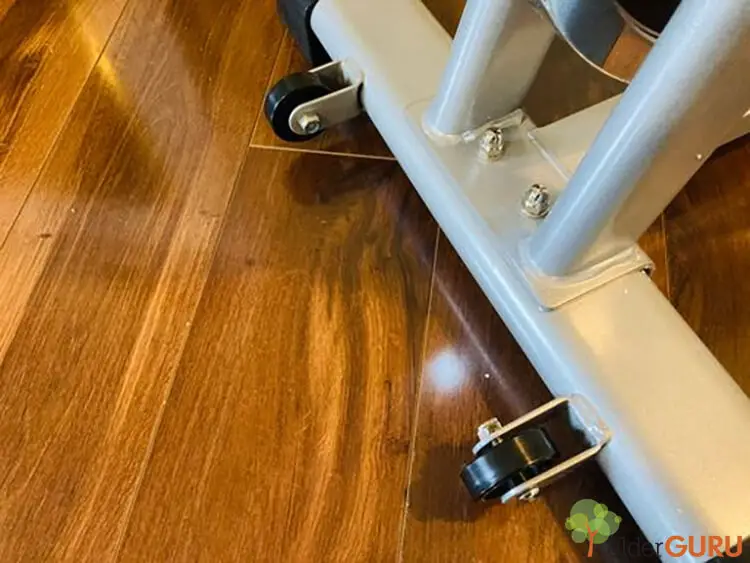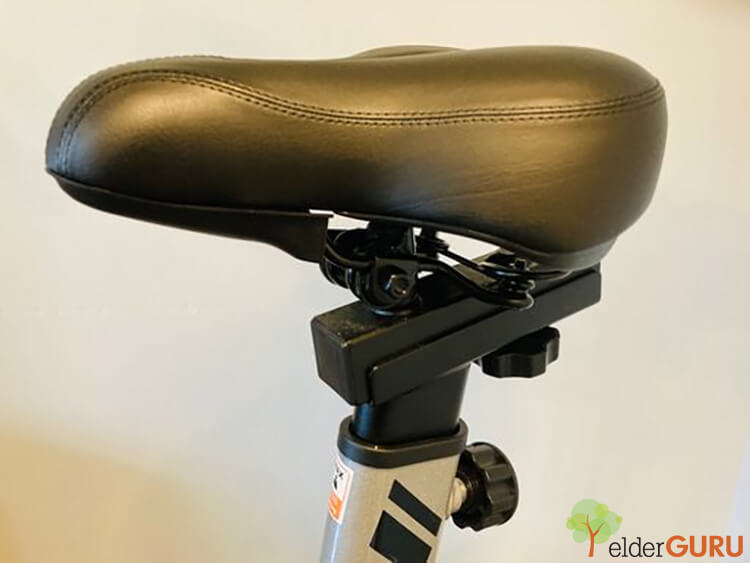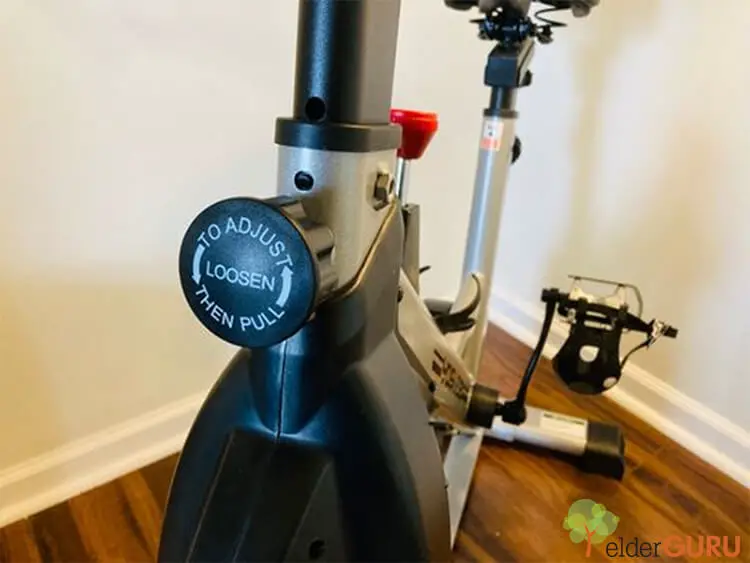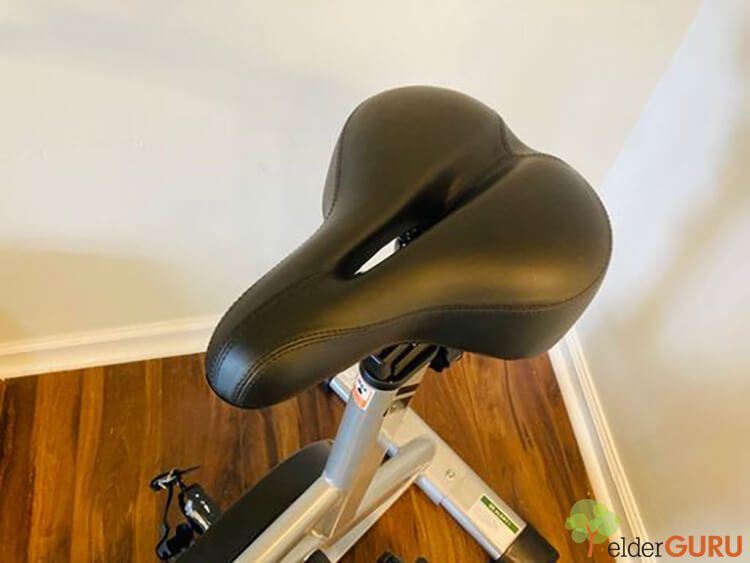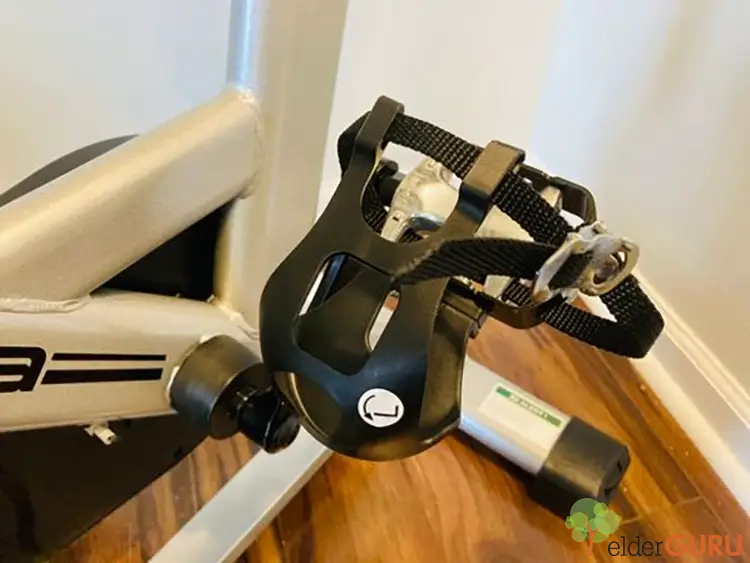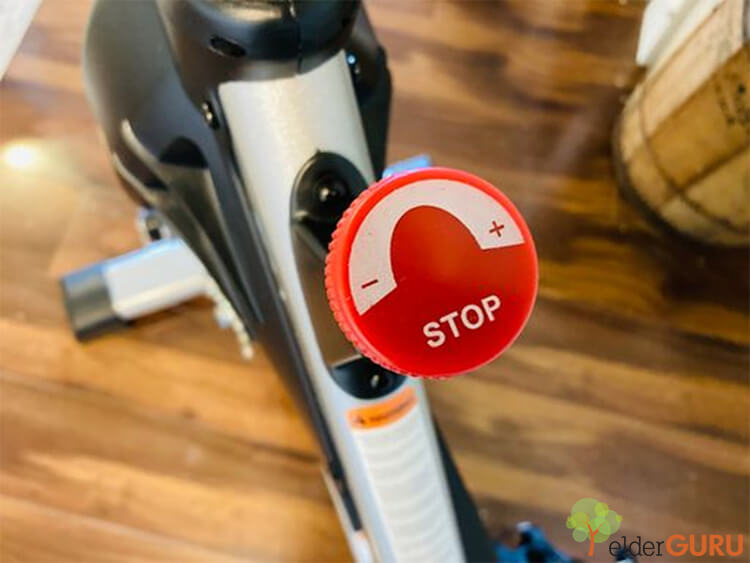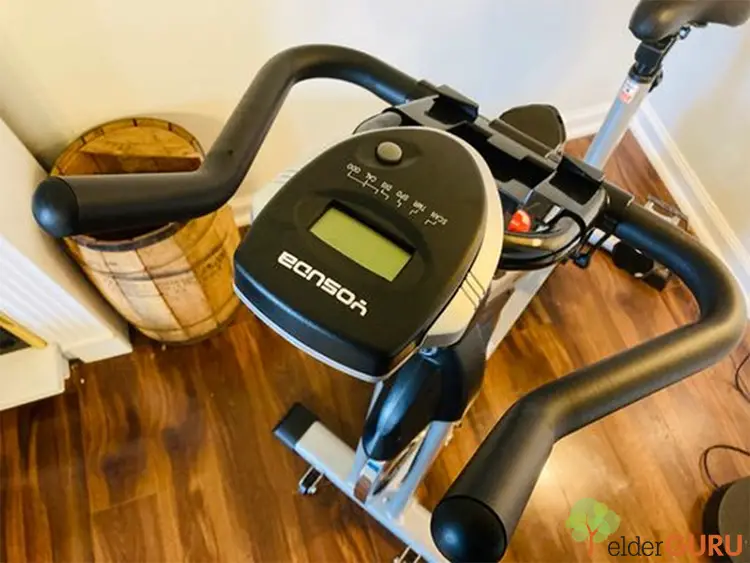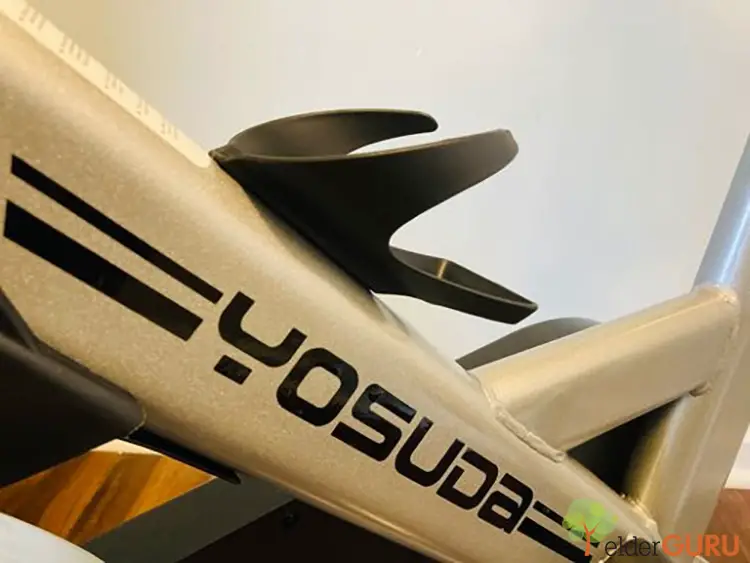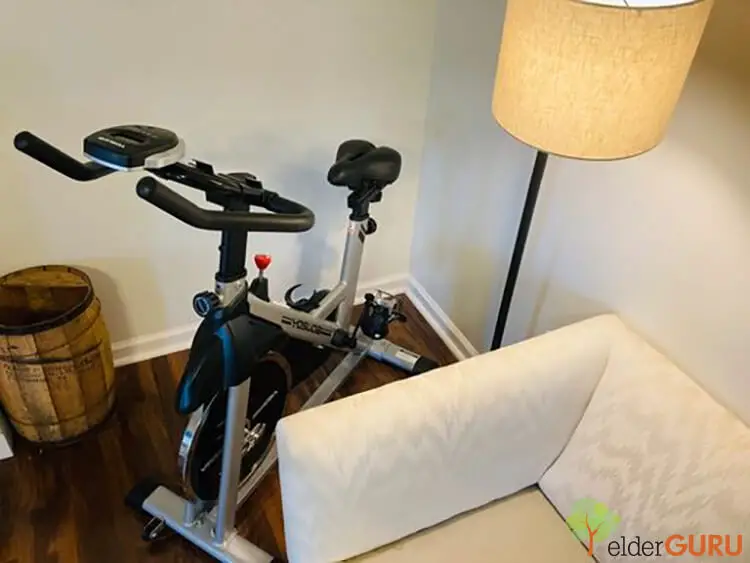It becomes ever more important to ensure that exercise is ingrained in one’s lifestyle as we age. Regular movement not only helps to keep the bones and muscles strong, but it helps to flush nutrients to the cartilage within the joints as well. Cartilage doesn’t really have a blood supply (it’s avascular), but it still has to get nutrients to it.
That’s where movement comes in. Joints are surrounded by fluid, and movement flushes the nutrients that are in that fluid all around the cartilage, keeping the little cartilage cells well-fed and happy.
And when it comes to fantastic means of doing this, I think that cycling is easily at the top of the list – particularly for seniors. That’s why I’ve covered exercise bikes for seniors before. In this article I’m looking specifically at the YOSUDA stationary bike, a reasonably-priced exercise bike that you can buy online and that fits snug in the corner of a room.
Cycling doesn’t jar the body, it allows one to get their heart rate elevated, and helps to keep the muscles in the legs strong. It’s because of all these reasons that I think a stationary bicycle could make a great addition to the home gym of a senior.
I worked within the field of health/fitness in a gym setting for a long time. I’ve learned what exercise equipment works and what makes for a decent product. The YOSUDA Indoor Stationary Cycling Bike offers a good balance between quality and price. If you’re a senior looking for a means of exercising at home, the YOSUDA could serve as an excellent option that won’t break your wallet.
Ease of Assembly
The first workout you’ll ever get with at-home workout gear is wrestling it into your home. The YOSUDA really isn’t an exception to this. The box is heavy – likely around 75 pounds or so. So, if you have joint issues or other medical conditions that may make it difficult to move something this heavy you’re going to want to have somebody else nearby to help you to get this thing inside.
Assembling the bike is straightforward. I didn’t even have to refer to the directions (granted, I’ve spent a lot of time around stationary bikes). You attach the legs, seat, and handlebars. It’s really as simple as that. And everything that you need for the assembly is included within the packaging.
I used two included wrenches to attach everything and tighten it down without any problem whatsoever. The entire assembly process probably took around 25 minutes or so. The only difficult part of the entire process is getting that first leg attached.
The flywheel itself (the large front wheel) weighs 35 pounds. With all the other metal attached to it, this makes for a rather large hunk of metal that is all too happy to fall over as you try to put that first leg on. I had to call in for backup on that, having somebody hold the flywheel as I attached the leg. After that, the rest of the assembly process was a solo game.
Quality of the Components
The thing that most surprised me about the YOSUDA was how well it was crafted. If you’ve ever shopped for exercise equipment off Amazon before, you’re likely familiar with the quality of bike, elliptical, or treadmill you get for under $500. It’s typically very cheaply made equipment that is built to last a year or so.
For example, I recently purchased a treadmill off Amazon. It gets the job done, but it’s most certainly not what I would consider high-quality.
I think the YOSUDA is an exception here. Not only was I pleasantly surprised with how sturdy of a bike this is, but everybody else that has seen it so far has said the same – even going so far to say that it appears to be the same type of bike used in their spin classes.
Spin classes are super intense group exercise classes on stationary bikes. They typically involve a lot of high-pace music and a brightly-colored spandex-wearing instructor whose spirit animal is a Jack Russel. Most gyms will offer 3+ spin classes per day, meaning these bikes get a lot of use.
Not only do you have somebody (me) who spent years working in personal training people telling you that this is a decent-quality bike, but you have spin class participants saying the same.
Is the YOSUDA Indoor Stationary Bike Easy to Move?
As a senior, if you build a piece of exercise equipment in your house, being able to move it to its destination safely is imperative. Obviously, if you can build a piece of exercise equipment where it is going to spend its life, you’ve found the ideal.
This isn’t always possible, however. There are times when the piece is going to end up tucked away somewhere and you need plenty of space for the building process – meaning that the piece ends up being built quite a ways away from where it is going to stay.
Fortunately, the YOSUDA is rather easy to move about. The presence of two small casters on the front of the bike mean that all you have to do is lift up the rear of the bike and you can take the bike to wherever you want to go.
I was pleasantly surprised with how easy it was to lift the rear of the bike as well. When I first mentally prepared myself for moving this thing, I was prepared for the weight one gets when they move a commercial elliptical about. This wasn’t anywhere near that weight.
Most healthy, relatively fit seniors will not have a problem with moving this bike about to whatever part of the house they need it to be.
Is the YOSUDA Stationary Bike Adjustable?
If you can’t adjust a piece of exercise equipment to the individual, then you don’t have a piece in front of you that can do a lot of good (and can potentially do more harm than good). With most bikes out there, you’ll find that it’s only the seat height that is adjustable.
That’s okay most of the time, but if we can adjust things even more, we get a piece of exercise equipment that will work for the most amount of people.
You get four different adjustment points on the YOSUDA bike: the seat height, the seat closeness, the seat angle, and the height of the handles. This is about as adjustable as it gets for a stationary bicycle.
The reason a lot of people end up investing in a stationary bicycle is because they have a history of knee pain and they’ve heard that cycling is a low-impact activity on the joints. A lot of times, though, a bicycle involves too deep of a knee bend for many of these people to be able to cycle in comfort.
It’s something of a 50-50 split amongst people with knee pain, with 50% being able to cycle comfortably and the remainder only wincing in pain as they try. A great deal of this depends on the extent of the injury, but the adjustment of the bike plays a large role here as well.
The shallower of a knee bend that there is on a bicycle (with somebody with knee pain), the less pain there tends to be for those with knee pain. That’s where I truly think that the YOSUDA stationary bike would excel. There are so many adjustments here that joint limitations should be able to compensate for about as much as is possible on a bicycle.
How Does the Seat Feel?
I hate a bicycle with an uncomfortable seat. They’re terrible. It’s not the lack of cushion that tends to aggravate me, but the seat shape. Nobody wants to feel like they’re sitting on a broom stick, yet that’s what too many bicycles today feel like.
The YOSUDA seat doesn’t feel like that. One can sit on this seat without feeling like cycling is the worst form of exercise of all time.
Perhaps what deserves the greatest level of attention with the seat, though, is the hole in the center of it. This is an ergonomic design that keeps from putting too much pressure on a man’s nether regions, keeping the blood flow from being occluded. See some terrifying statistics on this.
Using the YOSUDA Stationary Bike
I’ve spent a bit of time since receiving the YOSUDA stationary bike in the mail riding it, and here is what I’ve found:
For starters, the cycling motion is incredibly smooth. Many bikes have something of a “slack” where you have to put a bit of tension against the pedals for a small arc of motion before enough force is applied to start the revolution. This bike pedaled beautifully.
The straps are a bit finicky to get adjusted to where you want – there are easier strap options on other bikes out there – but I didn’t find them to be too large of an impedance. I haven’t tried cycling without the straps yet, but I don’t think one would want to try it. Once the flywheel starts moving it wants to stay moving, and I think it would be difficult to keep your feet planted on the pedals otherwise.
To up the resistance on the bike, just turn the large red knob clockwise.
There are no buttons to press or anything. If you can turn a knob, you can work this bike. The tension is added to the flywheel by means of a soft fabric brake. The tighter down that red resistance knob is cranked, the more purchase the brake will have against the flywheel. If the knob is tightened down all the way, it will literally be impossible for the flywheel to even move.
So, unlike many digitally controlled bikes where the resistance often stops at a non-standard “Level 20,” there are literally an infinite number of adjustments that cand be made to the resistance here, and things can really be fine-tuned with the twist of a wrist. Very cool.
Is It Easy to Get On and Off?
For a senior with balance problems, getting on and off a stationary bike could be something of an issue. One really doesn’t have to lift their foot any higher than they would when they step into a bathtub, but for many seniors, even stepping into a bathtub is too difficult (hence, walk-in tubs for seniors).
If one can safely enter a bathtub without any issue, though, then they should be able to safely mount and dismount the YOSUDA stationary bicycle.
What’s the Display Screen Like?
The display screen is about as simple as it gets. There’s one button. That’s it. The downside is that you are not going to get any pre-programmed exercise routines to follow like you will with higher-end bikes.
Even the most technologically challenged of individuals should be able to figure this one out. Want to change the display from miles per hour to time? All you have to do is hit the button until you get to the display screen that you want.
The simplicity of this display screen goes together with the simplicity of the bike itself. It’s a very nice bike. It truly is. But it is simple as well. If you’re the only one that uses it, all you have to do is hop on, adjust the resistance, and start pedaling. Don’t want to look at your time anymore on the display? Hit the button.
There’s even a phone holder area near the display so that you can watch videos or listen to music from your smartphone as you pedal away.
A Few Other Pertinent Facts
This bike only has a max weight of 270 pounds. You’re going to need something larger than this if that number cuts you off. This bike is really built like a tank, but you’re trusting to the shear strength of a single bolt if you try to ignore the weight limit here.
There is a cup holder, so you can stay hydrated as you cycle – convenient!
Perhaps one of the most convenient aspects of a stationary bike over other forms of at-home exercise equipment – and particularly this stationary bike – is that it can fit into just about anywhere. You don’t have to turn your living room into Gold’s Gym when you bring this into your house.
This bike will tuck away into any nook or cranny and happily reside there without your feeling as if there’s an elephant in the room with you.
Not only is this tucked away, but I have plenty of room to get on and off, and I’m not hitting anything as I pedal.
What I Didn’t Like About the YOSUDA Stationary Bike
The only thing about the bike I thought was difficult to manage involved the seat. To assemble it, all you have to do is push the seat down onto a metal pole. You then have to tighten the nuts that keep it from wanting to swivel. I found that the seat tended to want to swivel unless it was cranked down on with a very high degree of torque.
It would probably be best to use a ratchet wrench with a longer handle rather than the thin little cut out wrench that is given with the bike for this task. I can see how a senior would have a hard time getting those nuts tight enough to get any semblance of stability with the seat unless they did so.
Is the YOSUDA Stationary Bicycle Worth It for Seniors?
The YOSUDA indoor stationary bike is a decent bike for seniors on a budget. You get free shipping to boot and 30 days to decide whether to return the YOSUDA stationary cycle or not. That’s a fair deal that you’re not going to get from Amazon, Craigslist, or Facebook Marketplace.
I am greatly enjoying this bike and I think it would make a fantastic addition to your at-home gym. With over 18,000 reviews on Amazon and a rating of 4.5 stars, it’s clear I’m not the only one who thinks this bike is worth the money.
Do you own one? Let us know your thoughts in the comments section below.

